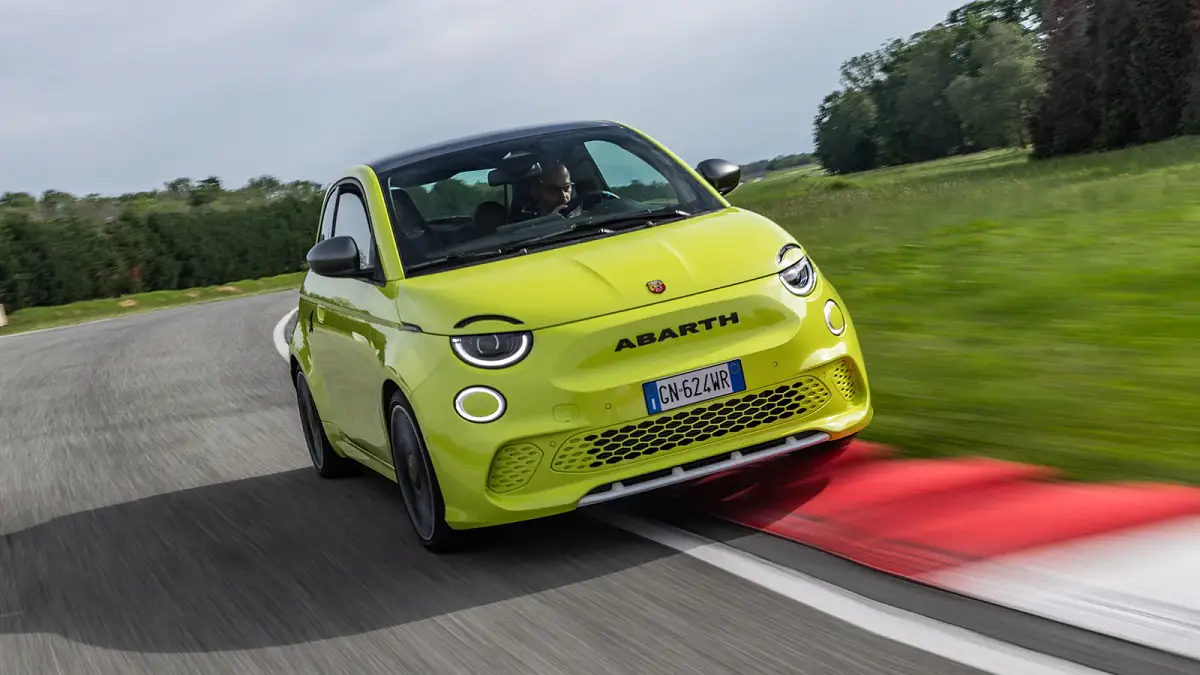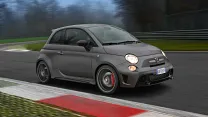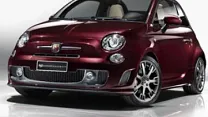NOTE - this is a bit of a tongue-in-cheek review. It's not an actual car so I had to randomly select a car model/type in the drop-down boxes above in order to submit it. Cheers!
Manufacturer: Tamiya
Model: Rising Fighter
Type: 1/10th scale battery powered radio controlled car
If you were a car person growing up in the 80s, one of the things that would have gotten your attention were radio controlled cars, known colloquially as “RCs”.
While most of us ended up with something like the Taiyo Jet Hopper (remember that), a few of us had the privilege of owning one of those bigger, fancier 1/10th scale RC off-road buggies.
Such as my older brother, who ended up getting a Tamiya Hornet after much begging and gnashing of teeth. Some of you might remember the Hornet as being one of the cheapest “proper” RC kits you could buy, which also made it one of the most popular at the time.
The Hornet was also remarkably simple in its design compared to its contemporaries. It was much faster but only slightly more mechanically advanced than “toys” such as the Jet Hopper.
That simplicity also made it relatively maintenance-free, which was a good thing. I ended up getting a car of my own a year later (a Tamiya Falcon), which was a lot more sophisticated than the Hornet but spent far more time being repaired than being actually driven, its badly designed driveshafts being a constant problem.
Nonetheless, my brother and I spent a great deal of time with our RCs and ended up having loads of childhood memories together.
Fast forward about 25 years later (circa September 2015), and with kids of my own now, I thought I’d get a new RC to re-live some of my childhood while creating more opportunities for father-child bonding.
After shopping around for a bit, I opted for one of the cheapest RC kits in the market: the Tamiya Rising Fighter.
Apart from the price, one of the other things that drew me to it was its instantly-recognisable silhouette - it was essentially a slightly updated version of my brother’s Hornet from 25 years ago!
Nostalgia is a hell of a drug.
RCs are still a fairly expensive hobby, though. The Rising Fighter costs $109.99 on its own, which includes the chassis, the body, all the mechanical components (e.g. gearbox, suspension, etc…), an RS-540 electric motor and an electronic speed controller and requires self assembly.
Like all RC kits, you have to provide a bunch of other components in order to complete the build. I basically bought the cheapest ones I could find in the shop, which were:
An Absima CR2S.V2 2-channel 2.4GHz radio system ($59.99)
An Intellect 7.2V 3000mAh NiMH battery pack ($44.99)
An Absima 7.2V battery charger ($24.99)
A generic-brand 10W servo for steering ($24.99)
So the whole thing cost me $264.95, and less than half of that was for the actual car.
The Rising Fighter’s mechanical bits are largely identical to the Hornet - its chassis is the same single-piece moulded plastic tub with integrated suspension towers, sitting on a fully independent MacPherson strut up front (without any sway bars) and a solid rear axle at the rear, where the driveshaft, differential and electric motor are all housed in a sealed, unsprung gearbox assembly.
It’s a simple setup that’s remarkably easy to put together (and to take apart) compared to, well… almost every other RC on the market. It took me about 5 hours (spread over two days) to put the car together, though I reckon an experienced hand can do it in under an hour.
While this simplicity has an Ikea-like elegance about it, there’s no hiding that this chassis was designed to be cheap, rather than durable.
This is a fragile car and I know because my brother’s Hornet was once torn into three pieces when it was hit from the side by another RC. And on another occasion, he punched a hole right through the gearbox when he drove over a rock.
I’m not sure if it’s still the case but, in the old days, the entire chassis and gearbox housing were listed as spare parts on the official Tamiya RC catalogues, which sort of gave you an idea about how often these things broke.
Indeed my Rising Fighter looks pretty worn too, with lots of scratches on its underbelly and signs of fatigue on the base of one of the front suspension towers, which was inflicted when one of my kids drove it under a fence at full speed. The steering arms are completely bent out of shape too, from the numerous collisions I’ve had with curbs, posts and the dividers in an on-road RC track.
Given the amount of abuse it’s been copping, I was expecting this car to be completely destroyed within a year. Yet here it is - three years later and still kicking up dirt like how an obedient little buggy should.
There are some differences from the Hornet, though - Tamiya didn’t leave the design completely untouched for 30-odd years.
For starters, the body is now a rigid moulded plastic shell that’s firmly screwed onto the chassis tub. Compared to the Hornet’s pinned-on polycarbonate shell, this new body probably helps with durability while reducing chassis flex.
The mechanical servo-actuated speed controllers of yore are gone too - replaced by an electronic one with integrated heat sinks, reducing the number of required servos to just one; for the steering. This reduces the weight of the car while giving much quicker throttle response and braking.
Admittedly even the new reissued Hornets (yes, you can still buy a new one!) have electronic speed controllers, which were already phasing out the mechanical ones as far back as the 1990s.
Not all the changes are for the better, though. While the Hornet had oil-filled dampers at the rear, the Rising Fighter’s ones are filled with… air. Which is, quite frankly, crap because if there’s one thing a car with a big, heavy, unsprung drivetrain doesn’t need, it’s a lack of rear dampers.
I guess it comes as no surprise, then, that the Rising Fighter handles exactly like how you’d expect it to: poorly.
On tarmac, the rear tyres constantly chirp as the rear end of the car bounces whenever you’re going at full throttle. Although the car turns in quickly with not much understeer, it doesn’t feel very precise. You’ll notice it if you take it to an on-road RC circuit, where it’s impossible to take a complex series of corners without slowing right down.
That gigantic rear wing is probably generating decent amounts of downforce because it corners with a surprising amount of stability at full speed, but it probably produces loads of drag too because “full speed” isn’t very fast.
And if you brake hard into a corner like you’re trying to do a hairpin turn, the car will roll over; those spiked rear tyres have a surprising amount of grip.
At this point, you’re probably thinking “But it’s a buggy. Surely it would do better on gravel, right? RIGHT?”
Wrong.
Higher-grip surfaces partially mask the fact that the Rising Fighter has a poorly sprung solid rear axle. Reduce the amount of grip, and it comes alive. Which is to say that, if this were an actual car that I could sit in and drive, I’d be either paralysed or dead. Or both.
Driving the Rising Fighter on gravel is an exercise in restraint because it oversteers at the slightest provocation. Nail the throttle from a standstill and you’d have trouble keeping the car going in a straight line. Turn too sharply at speed and you’ll end up having to countersteer almost immediately, which you’d then have to counteract, and so forth.
In a competitive setting, like a race or time attack, you’d probably pick the car up and fling it into a lake after a couple of minutes.
But here’s thing, though - if you’re driving the car for fun, the Rising Fighter is pretty entertaining.
The fact that it requires so much skill to navigate the simplest of turns means that it’s immensely satisfying when you do make a turn.
There’s a dirt trail in my neighbourhood reserve that looks like a long, downhill, sweeping right-hander in a miniature rally stage and it’s loads of fun attempting to make that corner at full speed, over and over again.
I also frequent a nearby gravel car park where, armed with a box of mini witches hats, I can craft slaloms and hairpin turns to fulfill my mini gymkhana fantasies.
It’s at times like this that the Rising Fighter’s ability to break traction at will becomes more of an asset than a liability. It’s in its element, an imperfect car crashing over imperfect surfaces and kicking up a whole lot of dirt while doing it.
And in this age of Minecraft and Fortnite, who would’ve thought that kids would like doing donuts with an RC car? It’s a good reason to get out of the house and get some fresh air. And if your kid’s a “car person” too, that’s even better.
While not specific to the Rising Fighter, it’s also worth mentioning that battery technology has advanced pretty significantly in the last 30 years (which might be relevant to some of you who, like me, are returning to the hobby after a similarly-long hiatus).
The old Tamiya Ni-Cd 7.2V “racing packs” were rated at 1200 mAh and only gave you about 15 to 20 minutes of play time on a single charge, which meant that most people had to bring along a spare. This new, budget Ni-MH 7.2V pack offers almost three times the capacity, giving anywhere between 45 to 60 minutes of play time.
Most of my RC outings end because I’ve had enough, not because I ran out of batteries - that’s a huge improvement to the overall experience.
Add to that the more efficient electronics, which require fewer double-As, and R/Cs are now more of an actual hobby than a battery-charging simulator.
To conclude, I’d say that the Rising Fighter was money well spent. It has proven to be a lot more durable than I expected, though I really should straighten those steering arms with some pliers one of these days.
You won’t win any races with it, but it’s great fun to throw it around a gravel track, which is a great way to teach your kids about car control. On that note, I can only hope that, 30 years from now, my kids will be wander into a hobby shop looking to buy their kids a new RC kit based on what would then be a 60-year-old design.
Nostalgia is a hell of a drug.





























